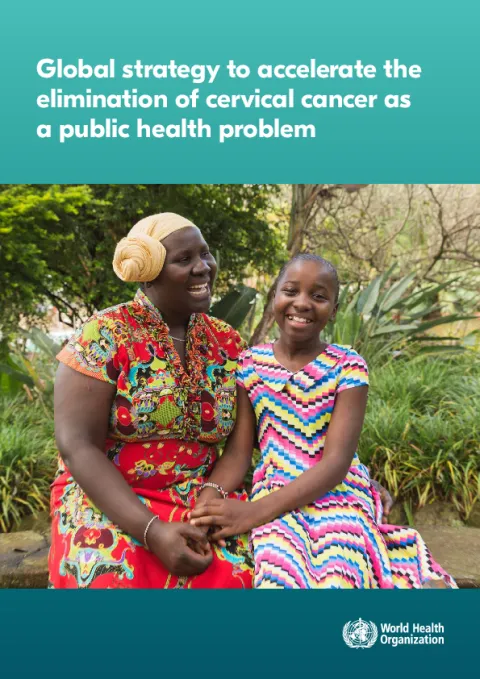Global strategy for the elimination of cervical cancer
In 2020, WHO aimed to eliminate cervical cancer, setting 90-70-90 targets by 2030. Vaccinate 90% of girls, screen 70% of women, treat 90% with cervical disease.

UICC supported WHO’s efforts for more than two years to conceive, draft and present the Global Strategy to accelerate the elimination of cervical cancer as a public health problem, which was launched on 17 November 2020.
The Global Strategy identifies the following threshold: cervical cancer would no longer be considered to be a public health problem when all countries reach an annual incidence rate of 4 cases per 100,000 women or less. This should happen within the lifetime of today’s young girls.
Expected benefits include a 42% reduction in cervical cancer rates by 2045 and preventing over 74 million new cases by 2120, with 300,000 deaths averted by 2030.

A three-pillar approach
The cervical cancer elimination initiative suggests a three-pillar approach, as no single intervention will be enough.
The strategy requires accelerated action in prevention, screening and cancer management, to reach the following targets by 2030:

of girls fully vaccinated with HPV vaccine by 15 years of age

of women are screened with a high-performance test by 35 and 45 years of age, pre-cancerous lesions are treated early

of women identified with cervical disease receive treatment (including treatment of cervical pre-cancer, and invasive cancer)
WHO estimates that achieving and sustaining the 90:70:90 targets will avert 74 million new cases of cervical cancer and 62 million deaths in 78 low- and middle-income countries in the coming decades.
Two articles published in The Lancet show that 62 million women's lives could be saved by 2120 if the World Health Organization (WHO) proposed measures for cervical cancer elimination are implemented.
The analysis in 78 low-income and lower-middle-income countries describes the mortality impact of achieving WHO cervical cancer elimination targets.
17 November marks the Cervical Cancer Elimination Day of Action and the anniversary of the launch of the World Health Organization’s (WHO) Global strategy to accelerate the elimination of cervical cancer as a public health problem.
The Global Strategy and its related targets represent a unique opportunity to drive long-term, sustainable advocacy and save lives.
Today, UICC is part of the WHO-led Cervical Cancer Elimination Initiative to assist countries in achieving the "90:70:90" targets for vaccination, screening and treatment by 2030.
Related pages

Cervical cancer is the fourth most common cancer among women globally and currently, one life is lost every two minutes to this disease.
Cervical cancer

UICC works closely with the World Health Organization (WHO), other UN agencies and partners towards the elimination of cervical cancer as a public health problem.
UICC's actions on cervical cancer
Last update
Monday 20 November 2023